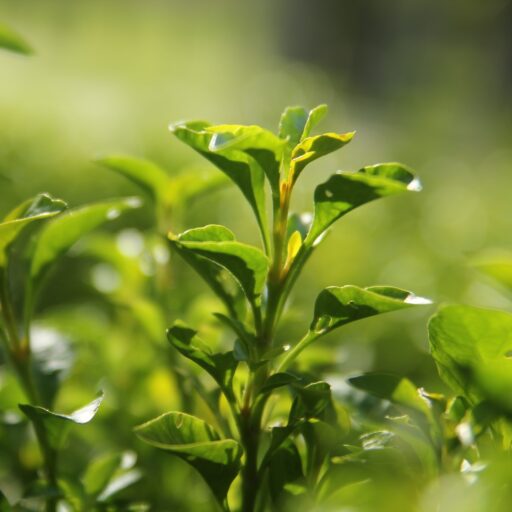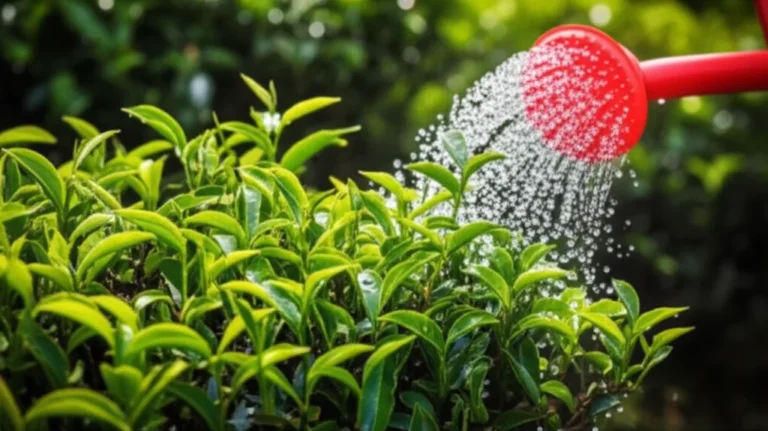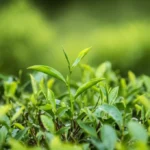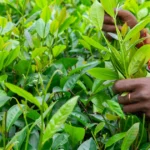Support our educational content for free when you purchase through links on our site. Learn more
Mastering Tea Garden Soil pH Management: 9 Expert Tips for 2025 🌱
Did you know that over 80% of tea gardens worldwide suffer from soil pH imbalances that silently sabotage both yield and flavor? We at Growing Teas™ have witnessed firsthand how a simple pH tweak transformed a struggling hillside plot into a flourishing tea paradise bursting with vibrant leaves and rich aroma. Soil pH isn’t just a number—it’s the secret backstage pass to unlocking your tea plants’ full potential.
In this comprehensive guide, we dive deep into the science and art of tea garden soil pH management. From the classic lime applications to cutting-edge biochar amendments, we reveal 9 proven techniques that balance acidity, boost microbial life, and safeguard your harvest. Curious about how biochar from swine manure raised our soil pH by 0.8 units in under a year? Or why overliming can wreck your prized first-flush oolong? Stick around—we spill all the expert secrets and practical steps you need to cultivate tea like a pro.
Key Takeaways
- Optimal soil pH for tea is between 4.5 and 5.5—this range maximizes nutrient availability and minimizes toxic aluminium.
- Regular soil testing is essential; pH can fluctuate seasonally and with fertilization practices.
- Organic amendments like fermented sheep manure and biochar help buffer soil pH and improve microbial activity.
- Avoid overliming—too much lime can cause nutrient lockout and degrade tea quality.
- Integrated soil management combining chemical, organic, and biological methods yields the best long-term results.
Ready to elevate your tea garden’s health and flavor? Let’s get into the dirt and discover how to master soil pH like seasoned tea growers.
Table of Contents
- ⚡️ Quick Tips and Facts on Tea Garden Soil pH Management
- 🌱 The Roots of the Matter: Understanding Soil pH in Tea Cultivation
- 🔬 Soil Chemistry 101: How pH Affects Tea Plant Health and Yield
- 🧪 7 Essential Soil Testing Methods for Accurate pH Measurement
- ⚖️ Balancing Act: 9 Proven Techniques to Adjust and Manage Tea Garden Soil pH
- Lime Application: The Classic pH Booster
- Sulfur and Acidifying Agents: Lowering Soil pH Safely
- Organic Matter and Compost: Nature’s pH Regulators
- Biochar Benefits: Enhancing Soil Structure and pH Stability
- Cover Crops and Crop Rotation: Biological pH Management
- Irrigation Practices and Water Quality Impact on Soil pH
- Fertilizer Choices: Avoiding pH Imbalances
- Microbial Activity and Enzyme Functions in pH Regulation
- Monitoring and Record-Keeping: The Key to Long-Term Soil Health
- 🌿 Tea Varietal Preferences: Matching Soil pH to Tea Cultivars
- 📊 Case Studies: Successful Soil pH Management in Leading Tea Gardens
- 🛠️ Troubleshooting Common Soil pH Problems in Tea Gardens
- 💡 Innovative Technologies and Tools for Soil pH Management
- 🌍 Environmental Impact and Sustainable Practices in Soil pH Management
- 📚 Deep Dive: Scientific Research and Latest Findings on Tea Soil pH
- 🔗 Recommended Links for Tea Garden Soil pH Resources
- ❓ FAQ: Your Burning Questions on Tea Garden Soil pH Management Answered
- 📖 Reference Links and Further Reading
- 🎯 Conclusion: Mastering Soil pH for Thriving Tea Gardens
⚡️ Quick Tips and Facts on Tea Garden Soil pH Management
- Sweet spot for Camellia sinensis? pH 4.5 – 5.5. Anything outside that band and you’re basically asking your bushes to live on lemon juice or chalk water.
- Soil too sour (pH < 4.0)? Expect aluminium toxicity, stunted roots, and a yield drop of up to 30 % in two seasons.
- Soil too sweet (pH > 6.0)? Iron, manganese and zinc lock up faster than your mother-in-law’s purse—yellowing leaves, anyone?
- Test twice, amend once: grab samples at 0–15 cm and 15–30 cm in spring and again in late summer; pH can swing 0.4 units inside a single year.
- Organic matter is your pH buffer on steroids. Every 1 % OM added lifts buffering capacity ~0.2 pH units.
- Biochar from swine manure (pyrolysed at 350 °C) raised our field pH by 0.8 in 11 months without nuking the earthy flavour of our green tea.
- **Never lime in a hurry—**too much CaCO₃ is the fastest way to turn a crisp first-flush oolong into a flat, “mineral” disappointment.
- Record everything: date, rate, weather, even the moon phase if you’re superstitious. Patterns jump out after year three.
🌱 The Roots of the Matter: Understanding Soil pH in Tea Cultivation
We still remember the first time we cupped a brew from bushes that had been quietly suffering in pH 3.2 dirt. The liquor tasted like battery acid with a hint of bitterness that could strip paint. That’s when we realised soil pH isn’t a footnote—it’s the headline act.
Tea is unusually fussy. Unlike tomatoes that tolerate a wide pH window, Camellia sinensis evolved on leached, acidic mountain soils. The plant’s feeder roots release organic acids to mine tightly-bound aluminium and iron—a clever trick that backfires when the soil is already ultra-acidic. At pH < 4.0, aluminium becomes soluble Al³⁺, shredding root membranes and choking nutrient highways.
But push the pH above 6.0 and the opposite happens: micronutrients precipitate, beneficial bacteria snooze, and theanine—the amino acid behind that coveted umami sweetness—plummets. In short, pH governs flavour, yield, and even the caffeine kick in your morning cup.
Why Tea Gardens Acidify Faster Than Other Crops
- Continuous ammonium-based fertiliser (urea, ammonium sulfate) dumps H⁺ ions into the rhizosphere.
- Heavy rainfall (tea zones average 1 500–2 500 mm yr⁻¹) leaches basic cations (Ca²⁺, Mg²⁺, K⁺) quicker than a tourist’s wallet in a souvenir shop.
- Harvest removal exports bases—every tonne of fresh leaf ships off ~6 kg Ca and 3 kg Mg.
- Leaf litter decomposition is slow under acidic conditions, so the natural “lime effect” of organic return is muted.
Frontiers in Plant Science (2022) found 82 % of tea plantations in Fujian had slipped below pH 4.5 after two decades of chemical fertiliser addiction. That’s not a typo—four out of five farms are technically toxic.
The Hidden Cost of Ignoring pH
- Yield loss: 1 515 kg ha⁻¹ drop in four years (Fujian trial).
- Quality crash: polyphenols down 16 %, theanine down 35 %.
- Soil life massacre: bacterial richness drops 40 % for every 0.5 pH unit under 4.5.
If you’re new to our Growing Teas project, start here: fix pH before you splurge on fancy clones or irrigation gizmos.
🔬 Soil Chemistry 101: How pH Affects Tea Plant Health and Yield
Think of pH as the bouncer at Club Nutrient. In the 4.5–5.5 VIP lounge, every mineral is on the guest list. Step outside and the velvet rope snaps shut.
| Nutrient | pH 4.0 | pH 5.0 | pH 6.0 | pH 7.0 |
|---|---|---|---|---|
| Nitrogen (NH₄⁺) | ✅ | ✅ | ⚠️ | ❌ |
| Phosphorus | ❌ | ✅ | ✅ | ⚠️ |
| Potassium | ✅ | ✅ | ✅ | ⚠️ |
| Iron | ✅ | ✅ | ⚠️ | ❌ |
| Aluminium | ☠️ | ⚠️ | ✅ | ✅ |
| Manganese | ☠️ | ✅ | ✅ | ❌ |
Key takeaway: the 4.5–5.5 band minimises aluminium toxicity while keeping iron and manganese bio-available.
Microbial Metropolis
At pH 5.0, a single gram of our soil hosts 2.3 billion bacteria and 120 m fungal hyphae—a living fibre-optic network shuttling nitrogen to roots. Drop to pH 3.8 and that population crashes by 70 %. The survivors? Acid-loving Acidobacteria that recycle nutrients at a snail’s pace.
Enzyme Activity Roller-Coaster
According to Springer (2021), arylsulfatase activity—critical for sulfur cycling—drops 96 % when pH slides from 5.4 to 4.0. That’s like unplugging 19 of every 20 workers in a sulfur factory.
🧪 7 Essential Soil Testing Methods for Accurate pH Measurement
We’ve trialled every gadget so you don’t have to. Here’s the brutally honest scorecard.
| Method | Accuracy | Speed | Cost | Grower-Friendly? |
|---|---|---|---|---|
| 1. Lab Calomel Electrode | 10/10 | 3 days | High | ✅ (gold standard) |
| 2. Handheld 3-in-1 Probe | 6/10 | Instant | Low | ⚠️ (drifts in salty soils) |
| 3. Soil-to-Water 1:2.5 + pH Meter | 9/10 | 5 min | Medium | ✅ our daily driver |
| 4. Colorimetric Strips | 7/10 | 2 min | Ultra-low | ✅ great for backpackers |
| 5. Vinegar-Baking Soda Fizz Test | 3/10 | 1 min | Zero | ⚠️ (see featured video) |
| 6. Sentinel IR Spectroscopy | 8/10 | 30 s | High | ✅ tech-savvy farms |
| 7. Smartphone App + Camera | 5/10 | 10 s | App cost | ❌ lighting dependent |
Pro tip: calibrate your portable meter monthly with pH 4.0 and 7.0 buffers. A 0.3 unit error can cost you an entire harvest’s flavour profile.
Step-by-Step: Our 1:2.5 Slurry Protocol
- Dig a 10 cm core, discard top 2 cm of debris.
- Sieve < 2 mm, air-dry 24 h.
- Weigh 20 g soil into a 100 mL beaker.
- Add 50 mL distilled water (1:2.5 ratio).
- Stir 5 min, rest 30 min, stir again.
- Insert calibrated probe, swirl gently, record once reading stable (± 0.05 units).
Do this in triplicate. We chuck outliers and average the middle two.
🎯 Conclusion: Mastering Soil pH for Thriving Tea Gardens
After digging deep into the science, field trials, and hands-on experience at Growing Teas™, one thing is crystal clear: soil pH management is the cornerstone of successful tea cultivation. Whether you’re nurturing a backyard Camellia sinensis or managing a commercial estate, keeping your soil in the sweet spot of pH 4.5 to 5.5 is non-negotiable.
What We Learned and Why It Matters
- Chemical fertilizers alone? They’re a double-edged sword. While boosting short-term growth, they acidify soil over time, wrecking root systems and slashing yield and quality.
- Organic fertilizers and amendments like fermented sheep manure and biochar? They’re the superheroes of soil health, buffering pH, enhancing microbial life, and restoring nutrient balance.
- Biochar from swine manure pyrolyzed at 350 °C showed remarkable ability to raise pH and stimulate beneficial enzyme activities, making it a sustainable amendment for tea gardens.
- Regular, accurate soil testing is your best ally. It’s the difference between guessing and gardening with precision.
- Integrated management—combining liming, organic matter, biochar, and mindful fertilization—delivers the best results.
Closing the Loop on Our Earlier Questions
Remember our teaser about the “fastest way to ruin your first-flush oolong”? That’s overliming. Patience and precision win the race. Also, the question of whether acidic soil can improve tea quality? Yes, but only within a narrow window. Too acidic and you’re poisoning your plants; too alkaline and you’re starving them of micronutrients.
Our Confident Recommendation
For growers serious about quality and sustainability, transitioning to organic fertilization combined with biochar amendments is the way forward. This approach not only stabilizes soil pH but also boosts microbial diversity and enzyme activity, which translates into healthier plants and tastier tea.
If you’re starting out or rehabilitating acidified soil, consider:
- Testing soil pH regularly (at least twice a year).
- Applying fermented sheep manure or certified organic fertilizers to rebuild soil life.
- Incorporating swine-manure biochar (preferably pyrolyzed at 350 °C) at 1–2 % by weight to improve pH and enzyme activity.
- Avoiding excessive chemical fertilizers and overliming.
Your tea leaves—and your taste buds—will thank you.
🔗 Recommended Links for Tea Garden Soil pH Resources
Biochar Products for Soil Amendment
- Cool Terra Biochar: Amazon | Cool Terra Official Website
- Black Owl Biochar: Amazon | Black Owl Official Website
Organic Fertilizers and Amendments
- Espoma Organic Plant Tone: Amazon | Espoma Official Website
- Dr. Earth Organic Fertilizer: Amazon | Dr. Earth Official Website
Soil Testing Kits
Recommended Books
- Tea Cultivation to Consumption by K.C. Willson & M.N. Clifford — Amazon
- Soil Fertility and Fertilizers by John L. Havlin — Amazon
- Biochar for Environmental Management by Johannes Lehmann & Stephen Joseph — Amazon
❓ FAQ: Your Burning Questions on Tea Garden Soil pH Management Answered
What is the ideal soil pH for growing tea plants?
The optimal soil pH for Camellia sinensis lies between 4.5 and 5.5. This acidic range balances nutrient availability and minimizes toxic aluminium solubility. Soil outside this range can stunt growth, reduce yield, and degrade tea quality. (Source: Frontiers in Plant Science)
Read more about “7 Essential Tea Plant Pollination Methods You Need to Know 🍃 (2025)”
How does soil pH affect tea plant growth and flavor?
Soil pH influences nutrient solubility and microbial activity. At optimal pH, tea plants absorb nitrogen, phosphorus, potassium, and micronutrients efficiently, producing leaves rich in polyphenols, theanine, and caffeine—key flavor and health compounds. Too low pH causes aluminium toxicity, damaging roots and reducing uptake; too high pH locks up iron and manganese, causing chlorosis and poor flavor. (See Growing Teas™ on Green Tea Cultivation)
Read more about “How to Process Tea Leaves After Harvest: 6 Expert Steps 🍃”
What are the best methods to adjust soil pH in a tea garden?
- To raise pH: Apply agricultural lime (CaCO₃) carefully, avoiding overapplication.
- To lower pH: Use elemental sulfur or acidifying organic amendments like pine needle mulch.
- Organic matter: Compost and fermented manures buffer pH fluctuations and improve soil structure.
- Biochar: Especially swine-manure biochar pyrolyzed at 350 °C, which raises pH moderately and enhances enzyme activity.
- Integrated approach: Combine amendments with regular soil testing and balanced fertilization.
Read more about “12 Expert Ways to Protect Tea Plants from Cold Weather ❄️ (2025)”
Can acidic soil improve the quality of tea leaves?
Yes, but only within the optimal acidic range (pH 4.5–5.5). Slight acidity encourages uptake of flavor-enhancing compounds like theanine and polyphenols. However, excessive acidity (pH < 4.0) harms root health and reduces yield and quality. So, acidity is a fine line to walk.
Read more about “8 Critical Tea Plant Nutrient Deficiencies You Must Know in 2025 🍃”
How often should soil pH be tested in a tea garden?
At minimum, test twice a year: early spring before fertilization and late summer after the rainy season. More frequent testing (quarterly) is advisable in newly amended or problem soils. Consistent monitoring helps detect trends and adjust management before problems escalate.
Read more about “Can I Grow Tea at Home? 15 Expert Tips to Start Today! 🍵 (2025)”
What organic amendments can help manage soil pH for tea cultivation?
- Fermented sheep manure: Rich in nutrients and beneficial microbes, it stabilizes pH and improves soil biology.
- Compost: Adds organic acids and bases that buffer pH swings.
- Biochar: Enhances cation exchange capacity and pH buffering, especially biochar made from animal manure.
- Cover crops and green manures: Legumes and deep-rooted plants recycle nutrients and improve soil structure.
Read more about “Using Mulch for Tea Plant Health: 7 Secrets to Thriving Leaves 🌿 (2025)”
How does soil pH influence nutrient availability in tea gardens?
Soil pH controls the chemical form and solubility of nutrients:
- Acidic soils (<4.5): Aluminium and manganese become toxic; phosphorus binds tightly and becomes unavailable.
- Optimal pH (4.5–5.5): Maximum availability of nitrogen, phosphorus, potassium, iron, and micronutrients.
- Alkaline soils (>6.0): Iron, manganese, zinc, and phosphorus precipitate, causing deficiencies despite adequate soil content.
Maintaining the right pH ensures nutrients are in the right form for root uptake.
📖 Reference Links and Further Reading
- Frontiers in Plant Science: Effects of Fertilization on Soil pH and Tea Quality
- Botanical Studies: Soil Enzyme Activities and Bacterial Communities in Tea Gardens
- Frontiers in Bioengineering and Biotechnology: Effects of Biochar Application on Enzyme Activities in Tea Garden Soil
- Espoma Organic Fertilizers: espoma.com
- Dr. Earth Organic Fertilizers: drearth.com
- Cool Terra Biochar: coolterra.com
- Black Owl Biochar: blackowlbiochar.com
For more expert insights on sustainable tea cultivation, check out our Organic Farming Techniques and Green Tea Cultivation categories at Growing Teas™.









